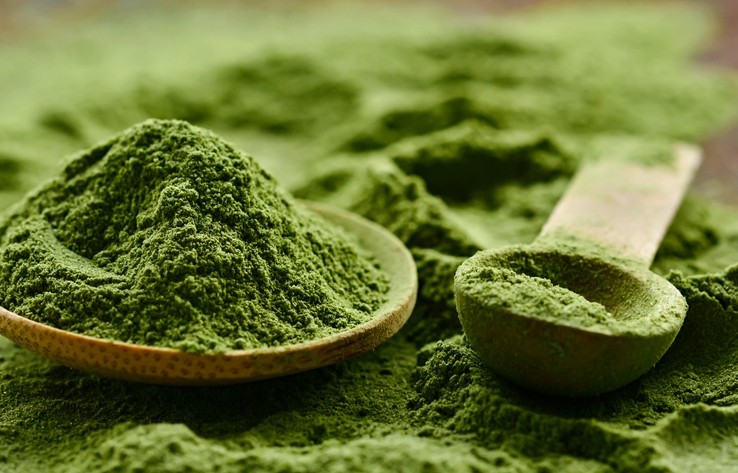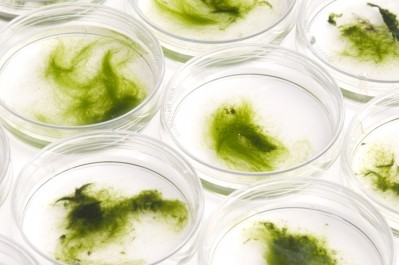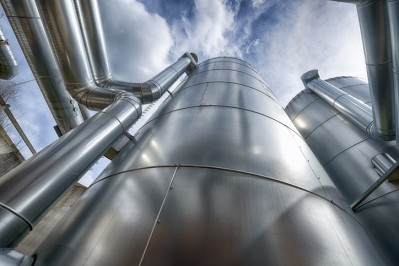special edition: novel proteins
Pond Technologies dives into aqua feed ingredient market

The Ontario-based cleantech company developed specialized, self-contained bioreactors that use industrial greenhouse gases to generate algae for use in animal feed and nutraceutical industries.
Pond Technologies Holdings Inc’s goal is to meet the needs of feed producers interested in sustainable feed protein, omega-3 fatty acids and other algae-based ingredients, said Peter Howard, vice president, project development.
“We have a role to play in sustainable manufacturing and energy production, and we’re part of the whole carbon capture and utilization space,” he said. “We can grow protein much more efficiently than pretty much any other source and it’s a high quality, nutritious protein with a good amino acid profile.”
The company has established a line of algae-based products for human use, he said. However, that market has some limitations of scale, which is promoting interest in the animal feed sector.
“We have commercial operations now for selling our algae-based products into the human nutraceutical market, but that’s not where we see the endpoint of this technology,” Howard said. “We want to scale bigger, we want to make a meaningful impact on greenhouse gas emissions."
In that respect the company is looking to target the animal feeds and aquaculture feeds segments.
Company background, technology development
Pond started in 2009 when founder, Steve Martin, whose background is in photonics and optics, turned his attention to algae production and his analysis found that some of the challenges in scaling algae production had to do with providing light, not with the algae, explained Howard.
The producer uses an enclosed bioreactor with artificial LED lighting and harvesting and nutrient systems to control the production of several strains of algae – including Haematococcus pluvialis and spirulina and chlorella.
“Our proprietary technology that we’ve developed is primarily around the LED lighting array and the sensors and controls surrounding that.
“Because it’s an enclosed bioreactor, we can control all the conditions in it - the CO2, the nutrients, the amount and intensity of the light, the operating parameters – to grow really any species of algae at not a lot of difference in cost.
“We’re doing photosynthesis in a tank – we light the tanks, we put the algae, the algae grow and photosynthesize, and, as they’re photosynthesizing, they’re taking in or biologically fixing carbon dioxide and turning it into themselves.
“The big challenge with growing algae is a lighting challenge – photosynthesis works best with red light but … red light doesn’t penetrate water very well, especially in algae, it’s only going a couple of inches,” he said.
The challenge to scaling algae production has been designing a 3-dimensional tank that allows algae to be within inches of a light source, he said.
“We think we’ve cracked it with a whole lot of proprietary lighting controls and optics to get the lighting and distribute it through the tank,” Howard said. “That’s the nitty-gritty of where our expertise comes in.”
Depending on the end product, there may be some processing of the algae involved other than separating it from its growth medium and drying it, he added.
The company has a demonstration facility based at a cement production facility in St Marys, Ontario and a commercial production facility where it generates astaxanthin, predominantly for use at this point in the human nutraceutical market, he said.
The ingredient is also already used in some aquafeeds, said Howard.
Focusing on aquafeed, market development
Pond is currently engaging with several global aquafeed and poultry feed companies, providing samples of its algae and algae products, said Howard. Companies can then run their own feeding trials.
“If you’re going to use astaxanthin oil, do you include it at the exact same percentage as the synthetic or the version grown in yeast? Does it pigment the same way? And do you add it at the same life cycle [stage]?” he said. “Or, for spirulina, at what inclusion rate does it displace fishmeal protein? Does it displace soy protein? Do you need to include 5% or 10% or 1%?”
“There is academic literature on all of that that we can draw on, but all the major feed producers want to do their own trials to get their heads around that,” he added.
Breaking into the feed market would allow the company to expand its focus on reducing emissions of carbon dioxide by supporting increased algae production, said Howard.
“There are several different products – spirulina powder, chlorella powder, astaxanthin, omega-3 fatty acids – these are all things that are sold into the human nutraceutical market and these are all things we’re looking to commercialize in one stage or another,” he said. “But the much bigger market for all those products is animal feed market – whether it’s astaxanthin for salmon feed, or omega-3 oils for again salmon feed, or just alternative proteins, that’s likely spirulina – the exact algae we’re growing for the human market, but with a much bigger volume.”
Pond is interested in partnering with feed companies to make use of the algae and products generated, he added.
When those relationships are established, Pond intends to find sites to locate new production facilities as needed, he said. “Once we get the contract from the feed producer, then we can finance the algae plant,” he added.
Pond is set to license its technology rather than own and operate the algae farms and plans to work with a contractor to do project management and construction management for future facilities, Howard said.
“We will locate the facility through a combination of a good source of carbon dioxide that is free of contaminants, and I’m talking really about heavy metals, so it’s free of any sort of heavy metals that might be a concern for either human or animal feed,” he said. The facilities also need a relatively inexpensive source of electricity.
The company is interested in reaching production at the level of hundreds of thousands of tons, but its current commercial facility generates a much smaller amount, he said. However, the main astaxanthin product generated at the moment is used in feed in small amounts.
“There are lots of other things that are higher volume in feed and particularly the aquaculture market,” said Howard. “Things like spirulina would just be dried and sold as a protein powder – it has around 65% protein by weight, which means it is much higher than soybean meal, which is about 40-45% and of course much, much higher than corn.”
“So spirulina proteins that would just be the actual algae biomass itself just dried and powdered and used as a protein ingredient and potentially in chicken and poultry and cow feed as well – that would be a very high-volume market,” he added.















